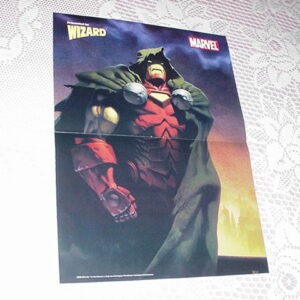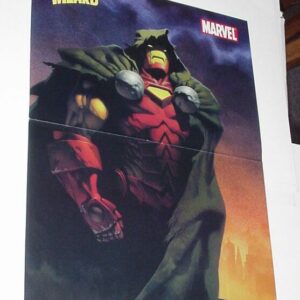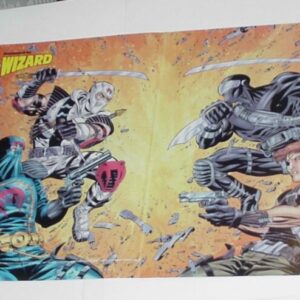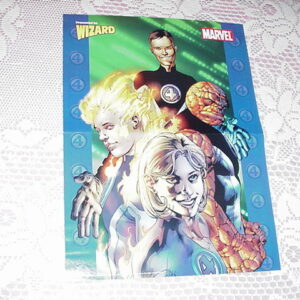Spider-Man Poster #140 Vulture (Adrian Toomes) by Creator, Steve Ditko
$34.99
Description
The Vulture was created by Stan Lee and Steve Ditko, and first appeared in The Amazing Spider-Man #2 (May 1963).
Adrian Toomes was born in Staten Island, New York. He is a former electronics engineer who was once the business partner of Gregory Bestman; Bestman handled the finances whilst Toomes handled the inventions. One day, after creating a flight harness, Toomes eagerly rushed into Bestman’s office to share the happy news. However, Bestman was not there, and Toomes discovered that Bestman had secretly been embezzling funds and that Toomes had no legal recourse, meaning he lost his job. Enraged, Toomes wrecked the business, discovering that the harness also granted him superhuman strength. He then decided to turn to crime professionally as the Vulture.
Utilizing his harness, the Vulture is able to fly as if by natural winged flight. He wears a costume of synthetic stretch fabric housing a tailored electromagnetic harness with bird-like wings attached beneath the arms. This consists of an electromagnetic anti-graviton generator worn on his body as a harness enabling him to fly silently with precise maneuverability. The harness also increases his resistance to injury to the point that he can survive blows from Spider-Man’s enhanced strength despite his age. Another by-product of his exposure to the harness is that despite his age and lack of exercise, his physical strength represents the upper limit of human development. When he removes the harness some of his enhanced abilities slowly fade, although the rate at which this transpires remains unclear (some writers have suggested that his strength is permanent). The Vulture is elderly and depends on his electromagnetic harness to augment his strength, vitality, and athletic prowess as well as absorbing life force to maintain his vitality. It has recently been revealed that, due to his prolonged use of the harness, the Vulture can levitate or float his body even without the harness, although he requires his wings to maneuver while airborne. The Vulture has a new version of his flight harness that has supposedly been augmented by the Green Goblin. Though Vulture claimed that it increased his strength by five-hundred percent it appeared to be a bluff to frighten the Black Cat, who proceeded to beat him half to death. The Vulture is intellectually brilliant in the fields of electronics and mechanical engineering, with a great talent for invention. He has earned a Master of Science degree in electrical engineering.
Stephen J. “Steve” Ditko (born November 2, 1927) is an American comic book artist and writer best known as the artist and co-creator, with Stan Lee, of the Marvel Comics heroes Spider-Man and Doctor Strange.
Ditko studied under Batman artist Jerry Robinson at the Cartoonist and Illustrators School in New York City. He began his professional career in 1953, working in the studio of Joe Simon and Jack Kirby, beginning as an inker and coming under the influence of artist Mort Meskin. During this time, he then began his long association with Charlton Comics, where he did work in the genres of science fiction, horror, and mystery. He also co-created the superhero Captain Atom in 1960.
During the 1950s, Ditko also drew for Atlas Comics, a forerunner of Marvel Comics. He went on to contribute much significant work to Marvel, including co-creating Spider-Man, who would become the company’s flagship character. Additionally, he co-created the supernatural hero Doctor Strange and made important contributions to the Hulk and Iron Man. In 1966, after being the exclusive artist on The Amazing Spider-Man and the “Doctor Strange” feature in Strange Tales, Ditko left Marvel for reasons never specified.
Ditko continued to work for Charlton and also DC Comics, making major contributions, including a revamp of the long-running character Blue Beetle, and creating or co-creating the Question, the Creeper, Shade, the Changing Man, and Hawk and Dove. Ditko also began contributing to small independent publishers, where he created Mr. A, a hero reflecting the influence of Ayn Rand’s philosophy of Objectivism. Since the 1960s, Ditko has declined most interviews, stating that it is his work he offers readers, and not his personality.
Lee and Ditko’s collaboration on the series saw the creation of many of the character’s best known antagonists including Doctor Octopus in issue #3 (July 1963); the Sandman in #4 (Sept. 1963); the Lizard in #6 (Nov. 1963); Electro in #9 (March 1964); and the Green Goblin in #14 (July 1964). Ditko eventually demanded credit for the plotting he was contributing under the Marvel Method. Lee concurred, and starting with #25 (June 1965), Ditko received plot credit for the stories.
Ditko was inducted into the comics industry’s Jack Kirby Hall of Fame in 1990, and into the Will Eisner Award Hall of Fame in 1994.
Near mint condition.
Related products
-


Iron Man Poster # 5 by Kev Walker Iron Doom Exiles 23 Cover
$29.99 Add to cart -


G.I. Joe Poster # 3 Cobra Commander Storm Shadow vs Snake Eyes and Billy by Mike Zeck
$34.99 Add to cart -


X-Men Poster #36 Mystique Joseph Michael Linsner Dawn
$34.99 Add to cart -


Ultimate Fantastic Four Poster # 1 Bryan Hitch Reed Johnny Sue Ben
$39.99 Add to cart


